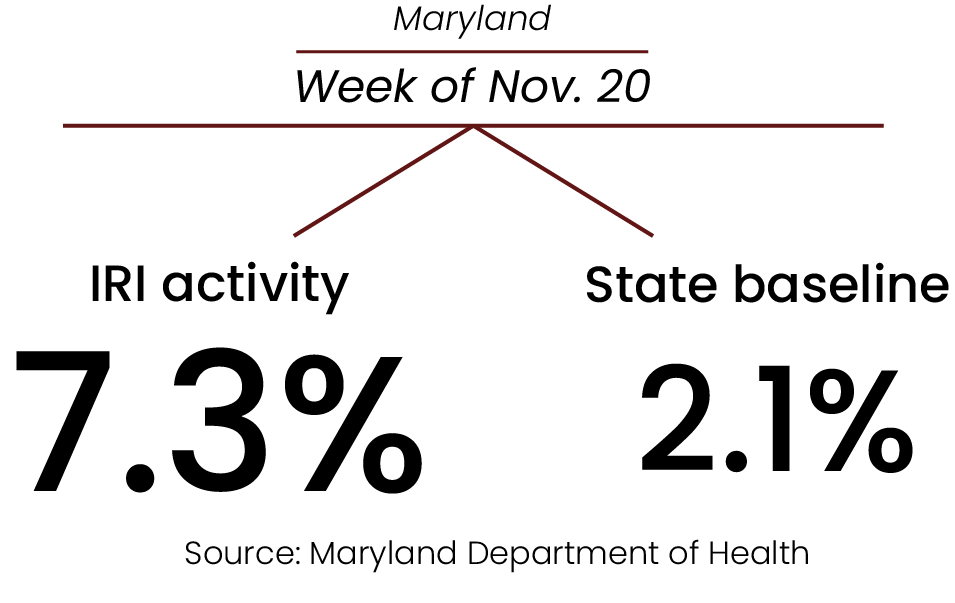This year’s flu season is hitting the U.S. earlier and harder than usual.
Seasonal influenza activity usually peaks in January or February, according to the Centers for Disease Control and Prevention. A 10-year average shows that activity often caps at a rate of 4.6 percent. This flu season, the influenza activity rate reached six percent halfway through November and surpassed seven percent by the end of the same month.
Flu seasons are tracked beginning the first week of October. Influenza activity is often measured by the percentage of visits to outpatient care facilities for Influenza-like illnesses (ILIs). ILI symptoms include a fever plus a cough or sore throat, according to the CDC.
In nearly every state, flu activity this year is higher than it was at the same time five years ago. States like South Carolina and Alabama saw ILI rates above 10 percent during the first week of November, a 300 percent increase from the same week of the 2017-2018 season when those states had rates below three percent, according to CDC data.
Washington, D.C., which had the second highest rate of influenza activity at 12.7%, saw a 600 percent increase compared to five years prior.
Near the beginning of this season, flu activity was the highest in the south and on the east coast, including Maryland. Since then, high rates have spread throughout the country.
Maryland has maintained a “high” or “very high” level of influenza activity since the middle of October, according to the Maryland Department of Health.

In Maryland, flu seasons typically reach peak activity rates between late December and late March, data shows. These peak rates average at 5.6 percent.
This flu season, Maryland reached an influenza activity level of 7.3 percent halfway through November. The state has seen rates higher than this in the past, but this season is the first time in a decade that rates this high have been recorded this early.
The last time numbers reached this high this early was during the H1N1 influenza outbreak during the 2009-2010 flu season, one of four influenza pandemics in history. That year, ILI activity peaked during week three of the typical flu season, according to the CDC.
The H1N1 pandemic peaked at a 7.7 percent influenza activity level, higher than than any season during the decade before it. After the outbreak’s peak, cases dropped and stagnated into the latter half of the flu season.
As the U.S. braces for the impacts of both the flu and COVID-19 this season, it also prepares for an influx of the respiratory syncytial virus (RSV), a common infection in children that causes cold-like symptoms.
Maryland experienced a large spike in RSV hospitalizations throughout October and early November before dropping later in the month, according to the state’s health department. RSV historically spikes around December, January or February, much like the flu.

You must be logged in to post a comment.